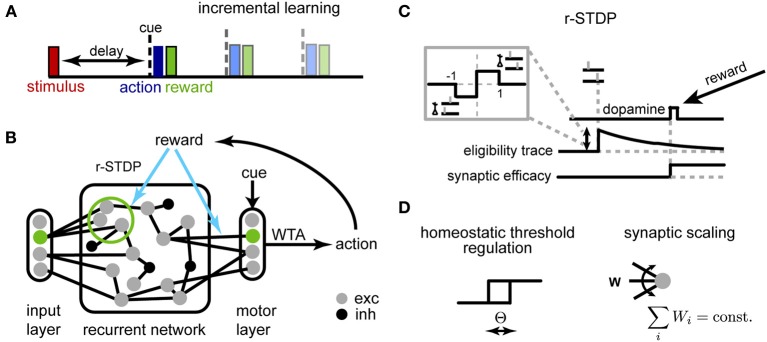Figure 1.

Schematic description of the model. (A) Delayed response task: at the beginning of each trial, one of K stimuli is presented to the network, requiring a stimulus-dependent action to be performed at the end of the delay period. When the cue appears, an action is selected yielding a corresponding reward. Initial trials have short delays, and we progressively increase the delay period during learning. (B) The network of threshold linear neurons receives localized, stimulus-specific inputs; the decision units determine the action to be performed by winner-take-all (WTA). The corresponding reward modulates plasticity events at synapses within the recurrent network and to the decision units. (C) Reward-dependent STDP is implemented using eligibility traces, with changes occurring only at the time of reward (see main text for details); additionally, (D) the neuron threshold is homeostatically regulated and the incoming synapses to each neuron are normalized.
